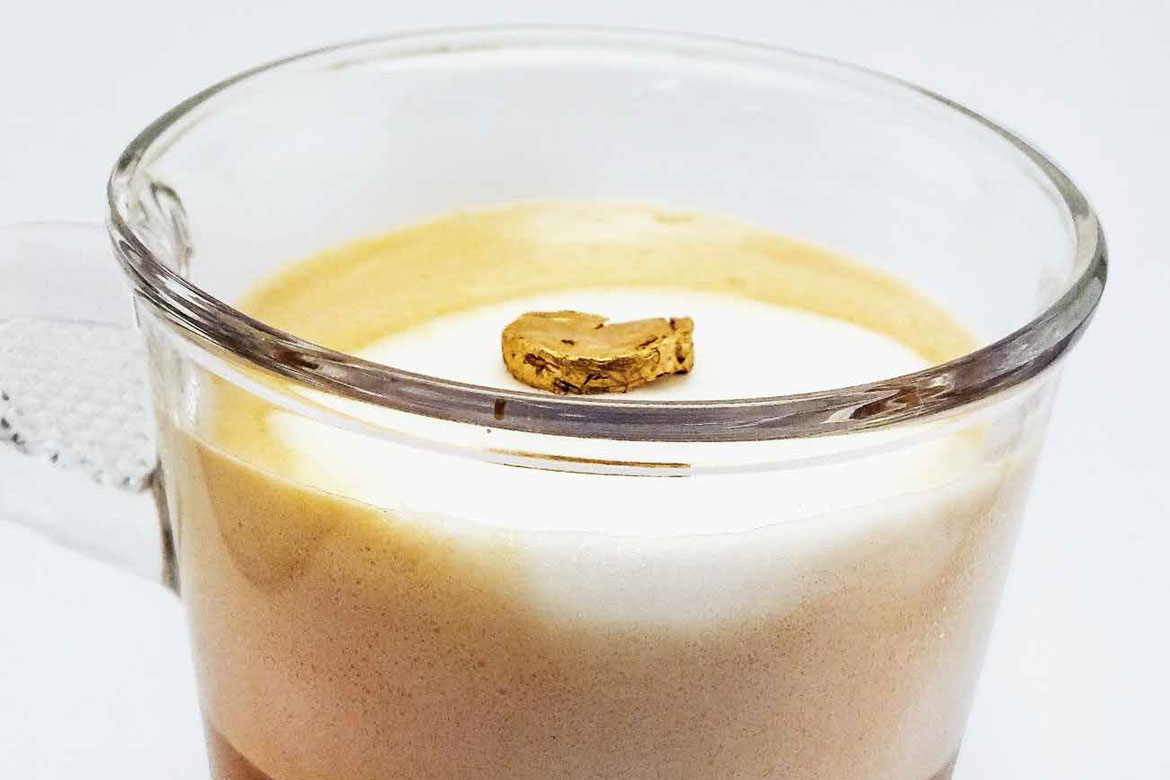Aerogels: These light materials are going to become cheaper
Some aerogels are almost as light as air. They are ideal for all kinds of applications: heat insulation, batteries, bioreactors, shock absorbers and satellite protection. In order to realise this potential, Swiss researchers are working on new methods for their mass production.

A kind of sponge made of gold and protein: this aerogel, which has very little solid mass but a large surface area, could one day become a catalytic converter. Image: Nyström/Mezzenga
A solid mass comprised almost solely of air – it sounds almost too good to be true. But this fabulous material really exists. Aerogels are light, porous solids that are produced from dried-out gel and are perfectly suited for use as heat insulators. But that’s not all they’re good for.
Matthias Koebel from Empa in Dübendorf is busy developing special applications for these extraordinary aerogels. For example, he wants to produce inorganic oxide aerogels as pigments for the luminous numerals in watches. He and his team are also working on membranes for biotechnological applications, and on miniaturised gas pumps without any moving parts.
Bendy batteries
Some ideas for aerogels are even more exotic: Raffaele Mezzenga and Gustav Nyström from ETH Zurich have developed an aerogel based on gold. The trick to making this lies in combining a protein with different amounts of gold. The protein ensures that the resultant material is flexible, and if you vary the amount of gold, you get a material with different characteristics. “You can end up with a kind of sponge that is just two percent solid”, says Mezzenga. This gold aerogel can serve as a catalyser. It’s similar to gold nanoparticles, but thanks to the gel’s large surface area, it might well function even better. Furthermore, this aerogel could be used to shield objects in space from cosmic rays. That’s a field of application in which materials have to be especially lightweight.
The aerogel battery that Nyström presented in 2015 is a completely different niche product. His team united a cellulose-based material with alternating layers possessing different electrical properties. This product is pliable and can withstand knocks. Such a battery could thus even be introduced into pieces of clothing. Other electronic components could also be constructed using the same principle, such as sensors or light-emitting diodes, says Nyström. Perhaps it could even be used for new kinds of three-dimensional chips to bring about a space-saving miniaturisation of electronics.
This research is still in a very early stage, however, and Nyström insists that there is no way as yet of guessing what the costs might be. But Matthias Koebel from Empa is convinced that no one will be concerned about high costs if the material in question is conceived for a specific purpose, if it’s the best on offer, and if only small amounts are needed. These unusual product ideas are in any case probably unsuited to mass production.
At present, mass production is anyway only possible for silica-based aerogels. These are the class of aerogels that have been investigated the most and that are the most widespread. They are also the only aerogels that are commercially available at the moment. Their processing technology is already at an advanced stage of technological maturity, way beyond the laboratory stage, says Koebel. But if this silica aerogel is to have any chance of being used to insulate houses, making it will have to become quicker and cheaper. To this end, Koebel and his team are now working on more efficient production processes.
When you produce silica aerogel, says Koebel, first you have to dissolve a precursor material like silicon dioxide in a liquid such as alcohol. After its solid particles have linked up to form a gel, the wet material then has to be dried. And there are different ways of doing this.
Into the drying tunnel
Koebel’s team has decided to use a procedure that is quicker and uses less energy than those hitherto in use. The solvent is dried under pressure in a kind of drying tunnel. The problem with this method is that the gel then shrinks a little, and cracks also form in it. That in turn means there are lots of small particles at the end. “It’s difficult to produce large pieces of aerogel like this”, says Koebel. But at least you can stick the granules together later to form larger pieces, like with polystyrene beads.
Up to now, the drying process has usually involved exchanging the one solvent with another. In one variant, for example, you can replace the alcohol with carbon dioxide – typically at a pressure of roughly a hundred atmospheres and at a temperature of over 50 degrees Celsius. After the carbon dioxide has drained off, the aerogel remains behind as silicon dioxide in the form of a netlike, ramified structure. The equipment needed for this is relatively expensive, and the production cycles require a lot of time and maintenance. What’s more, the procedure consumes a lot of energy. These are issues that will undergo a decisive improvement in Koebel’s new process.
One very important factor in production is adding chemical substances to the solvent to make the aerogel water-resistant. “Otherwise, the aerogel could later become saturated with water”, explains Koebel. That would make it useless for heat insulation. It could also crumble, and that in turn could make components fail.
The search for improvements is ongoing. Now, the researchers at Empa and in a spinoff called Nexaero are developing a “semi-continuous” production process. This is a common-or-garden approach to batch production which proceeds step by step in a range of stirrer tanks. But it would be unsuitable for Koebel’s aerogel production because it is too slow. In a semi-continuous process, however, only a few interruptions occur between adding the raw materials and getting the finished product at the end.
When the drying is over, the granules should then emerge “as if from a baking tunnel for croissants”, as Koebel jokingly remarks. That would be a major step towards mass production. Koebel believes that small-scale production will be possible as early as 2020. If everything goes according to plan, large-scale capacity will become available just two years after that.
Almost as light as air
The first aerogels were made over 85 years ago by the US chemist Samuel Kistler. They have long been regarded as promising materials – not least because they are generally non-toxic and non-flammable, and they can possess interesting physical or chemical characteristics depending on their basic material. But it is only in recent decades that individual products have become ready for the mass market – primarily insulating materials that are employed in refineries and pipelines, for example. Some aerogels are almost as light as air.
Sven Titz is a freelance journalist in Berlin.




